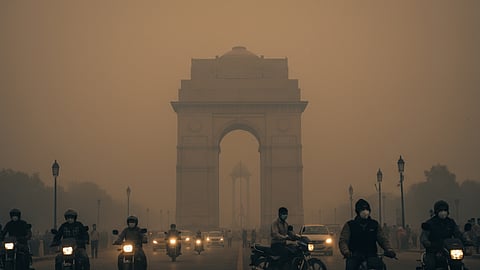

Poor AQI and Delhi, well the topic may sound academic or in GenZ's language- boring to some, it is one of the burning topics of India. While Diwali and other festivals concluded in October, India's national capital still feels like a gas chambers.
The seriousness of the issue can be understood by the fact that, Delhi witnessed a major protest with people coming onto the roads and demanding to breathe fresh and clean air.
In fact, while writing this, as of 12:02 pm on November 14, Central Pollution Control Board (CPCB) reported that multiple areas of New Delhi are witnessing poor to severe AQI.
For instance, Ashok Vihar in Delhi is witnessing severe AQI at 411. CPCB suggests that breathing this kind of air 'affects healthy people and seriously impacts those with existing diseases'.
Well to a common person such question often pops up. Since, Delhi has not much of farm, hence farm fires must be less then how come the UT's AQI is often worse than Punjab? Let's understand some factors-
India TV quoted a study by the Centre for Research on Energy and Clean Air (CREA). The study has revealed that thermal power plants in the NCR cause 16 times more air pollution than crop burning aka stubble burning.
According to a CREA study, "Thermal power plants in Delhi-NCR produce 16 times more pollution than the 17.8 kilotons of pollution caused by burning 8.9 million tons of stubble."
The study further states that between June 2022 and May 2023, coal-powered thermal power plants in NCR released 281 kilotons of sulfur dioxide (SO ).
As per NDTV, the contribution of stubble burning to Delhi's PM2.5 levels in October was less than six percent, suggesting that local and year-round emission sources, particularly vehicles and industries, continue to drive pollution levels.
Other factors that contribute to Delhi's poor AQI are Biomass and waste burning, Diesel generators, Farm Fires, and Firecrackers.
It is pertinent to mention here that Centre has recently praised Punjab Government for slashing farm fire cases by a staggering 85%. In 2021, Punjab recorded 71,300 incidents of stubble burning. By 2024, this number dropped to just 10,900—a reduction of 85%. This year, the state has seen only 3,284 incidents so far, a trend suggesting that Punjab is writing a new chapter on agricultural sustainability.
The Supreme Court on Wednesday directed the governments of Punjab and Haryana to file detailed affidavits outlining the steps taken to prevent stubble burning, as air quality in the national capital and adjoining areas plunged to "severe" levels.
A bench, headed by Chief Justice of India (CJI) B.R. Gavai, which has been monitoring measures to curb air pollution in the Delhi-NCR, took note of submissions highlighting worsening conditions despite enforcement of the Graded Response Action Plan (GRAP).
Senior advocate Gopal Sankaranarayanan submitted before the Bench, also comprising Justice K. Vinod Chandran, that while GRAP-III is currently in force, the prevailing pollution levels warrant implementation of GRAP-IV — the most stringent stage of anti-pollution measures.
Senior advocate Aparajita Singh, who assists the top court as amicus curiae (friend of the court) in a public interest litigation (PIL) relating to control of pollution, also flagged discrepancies in official data and warned that the situation had become "very dangerous".
With inputs: IANS